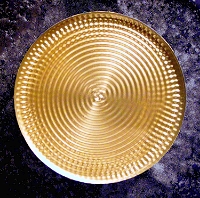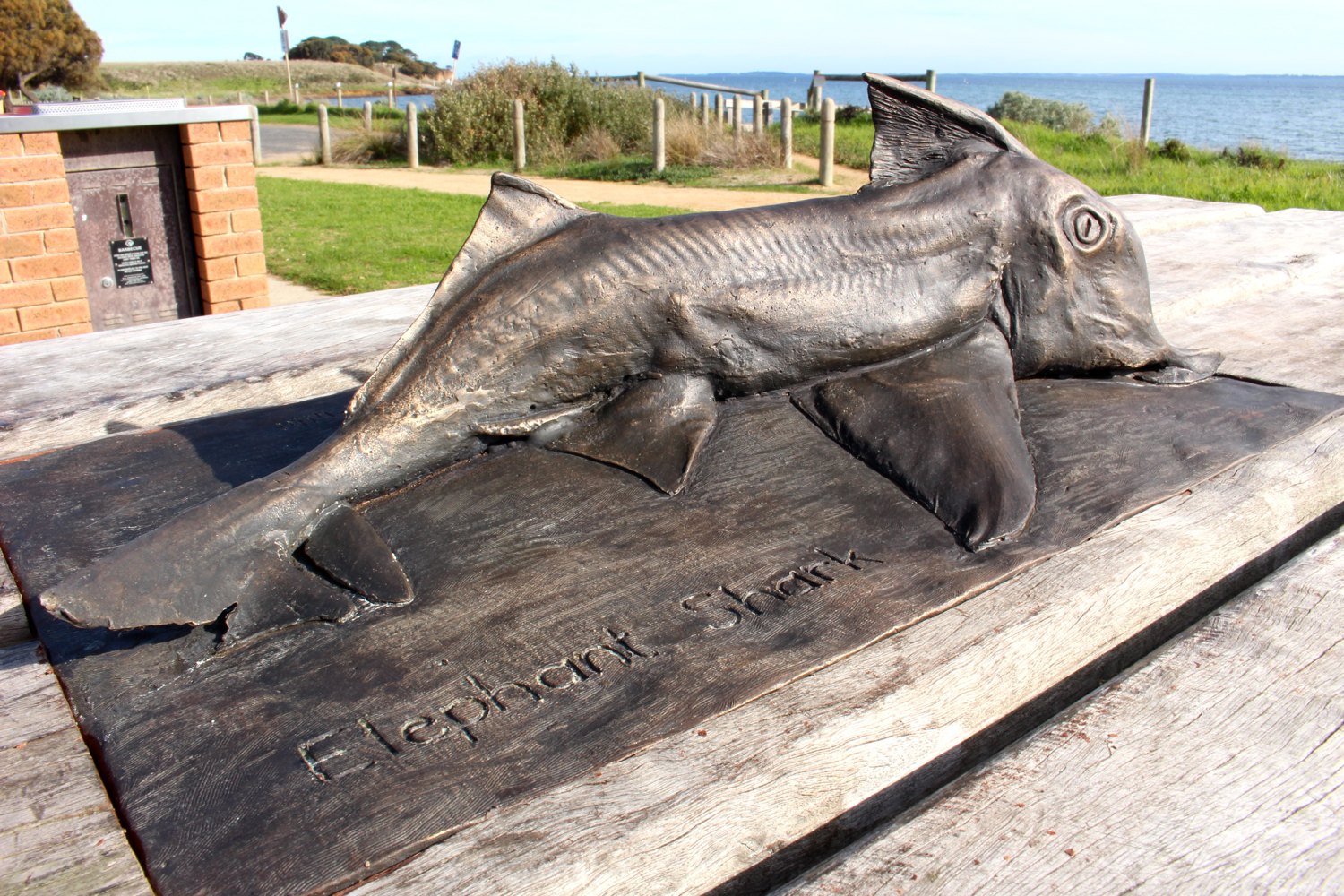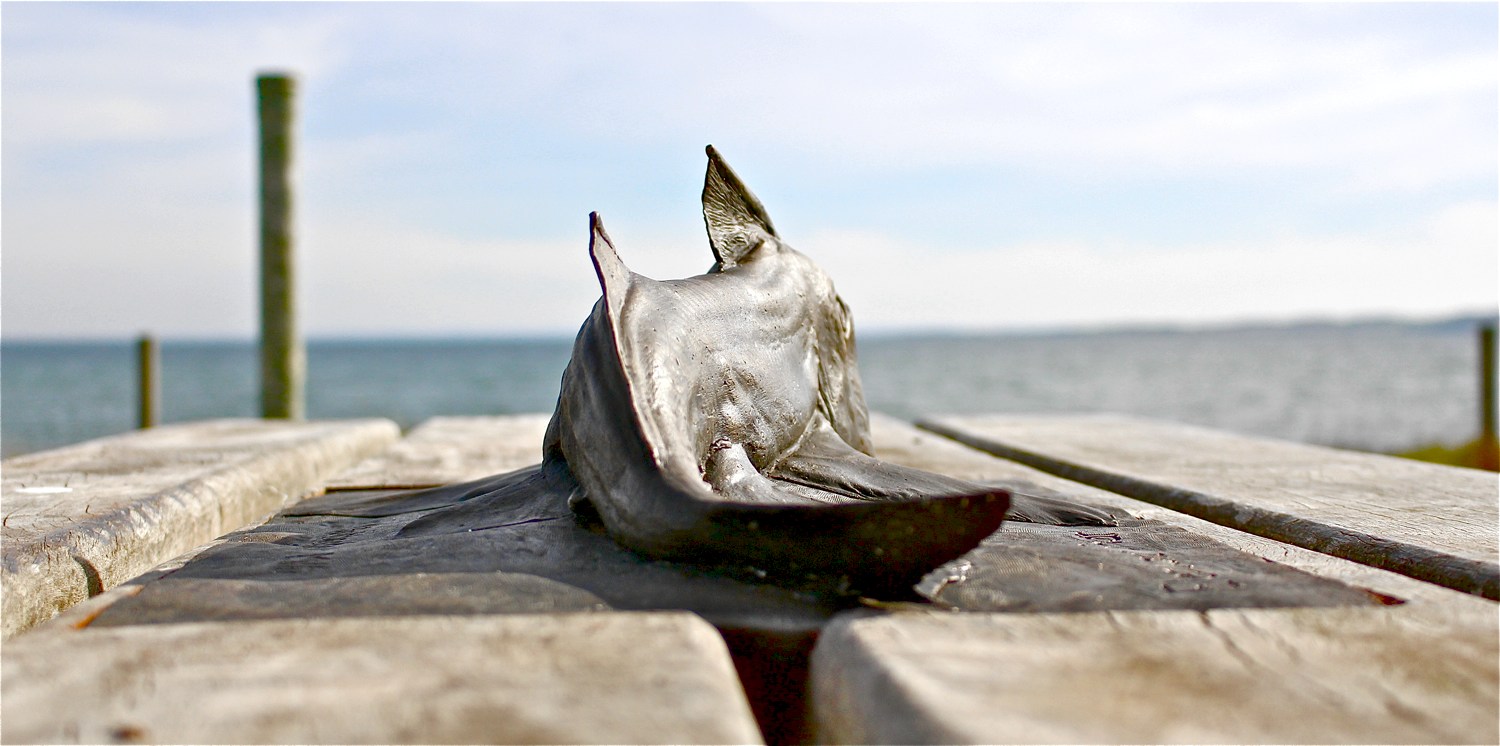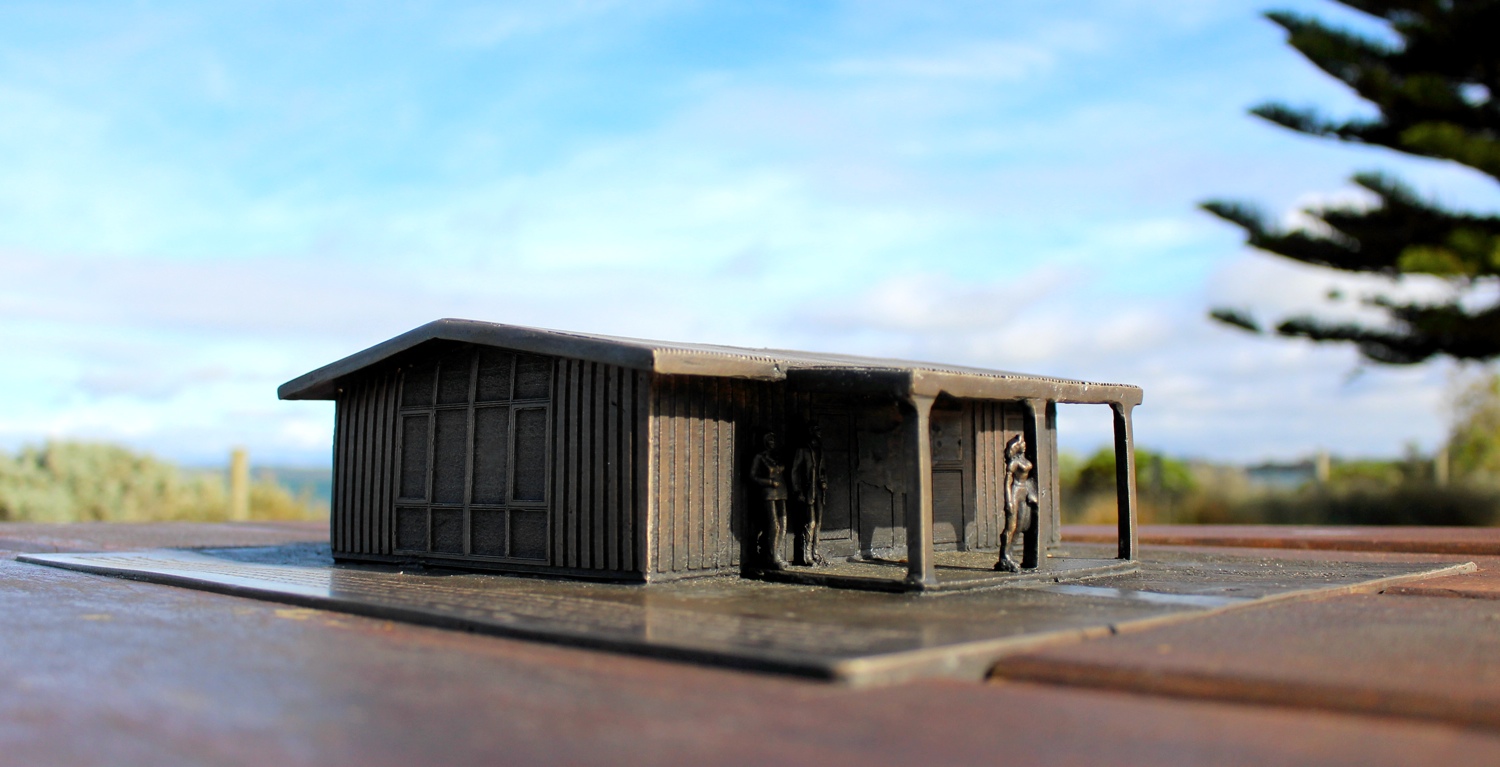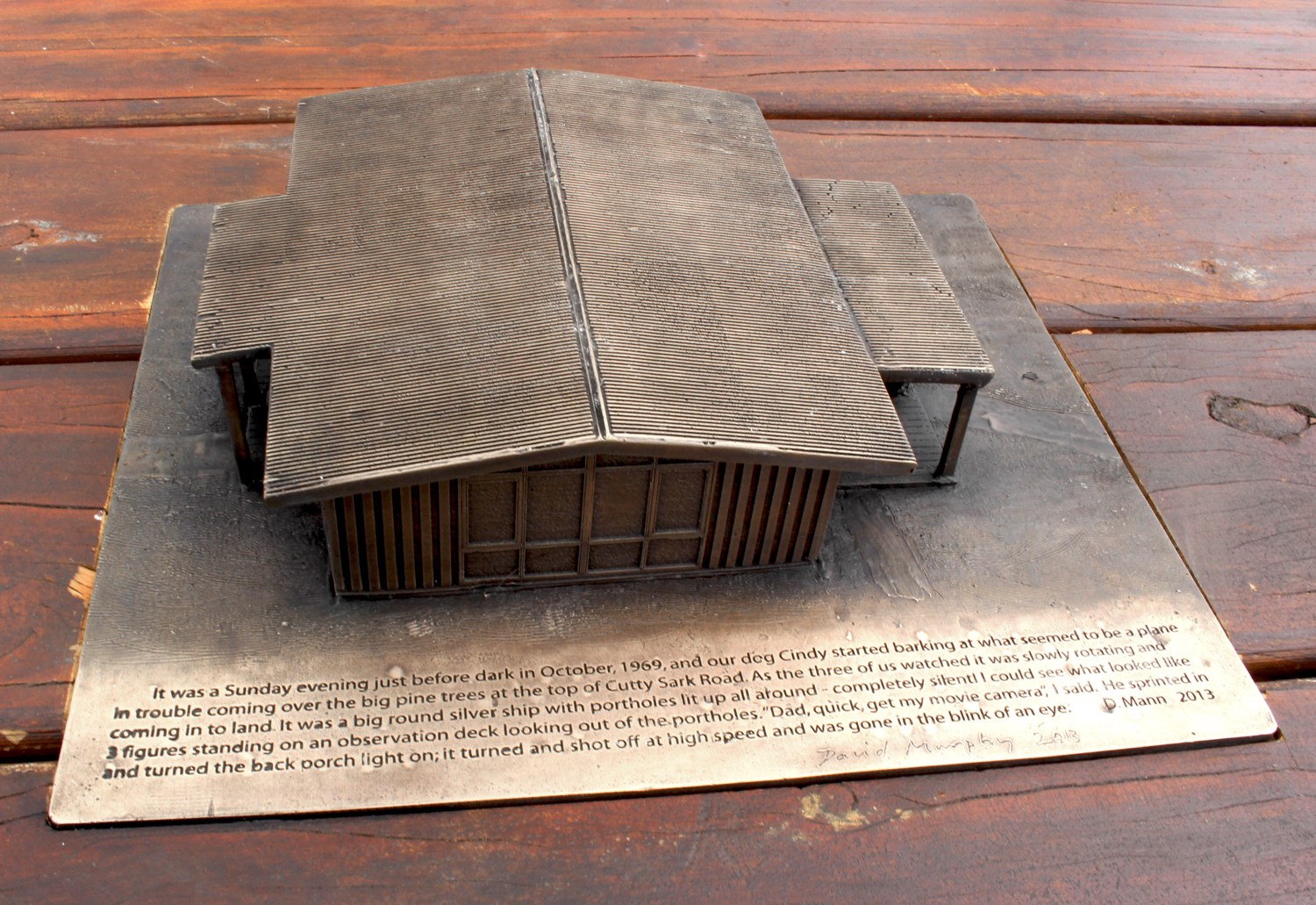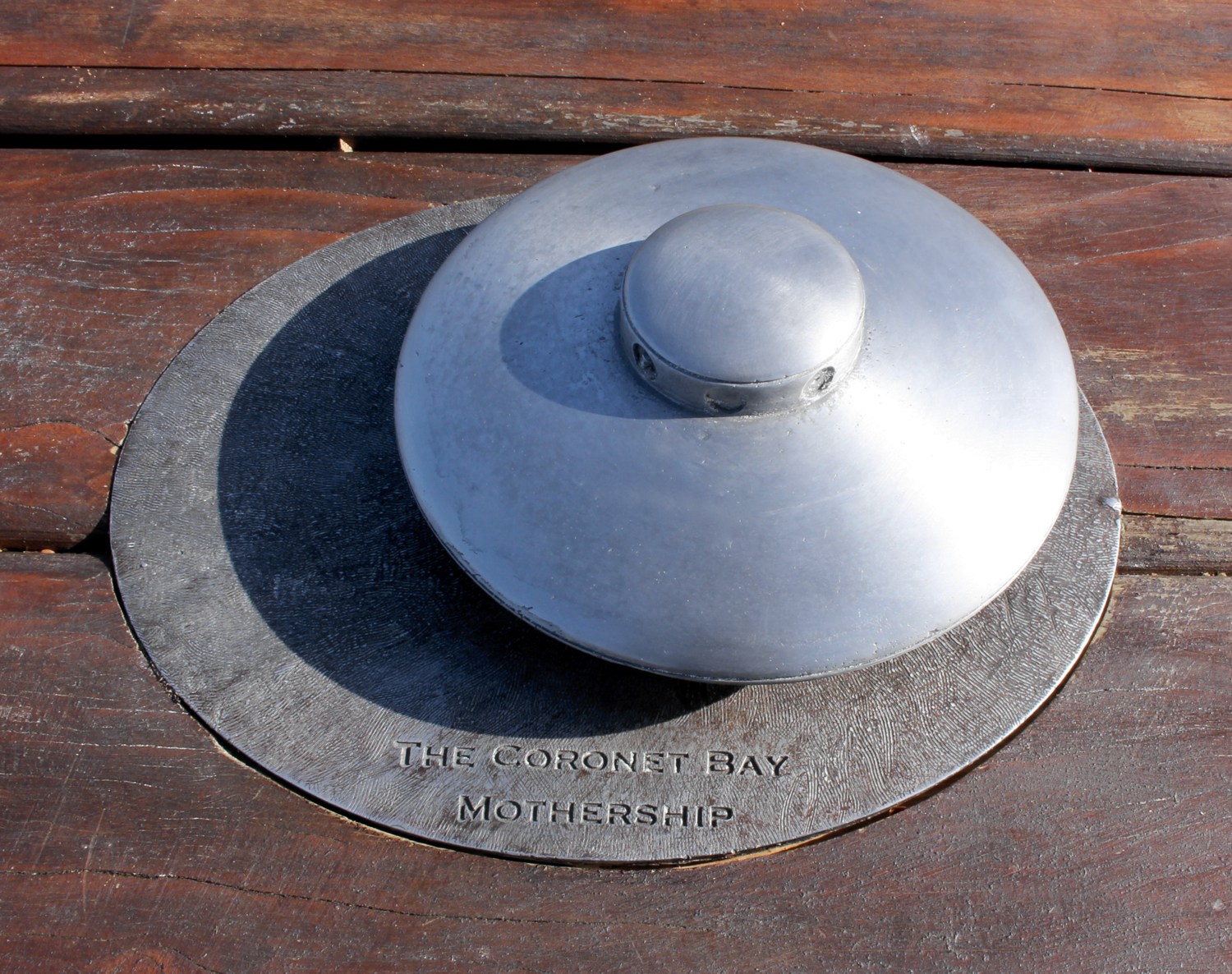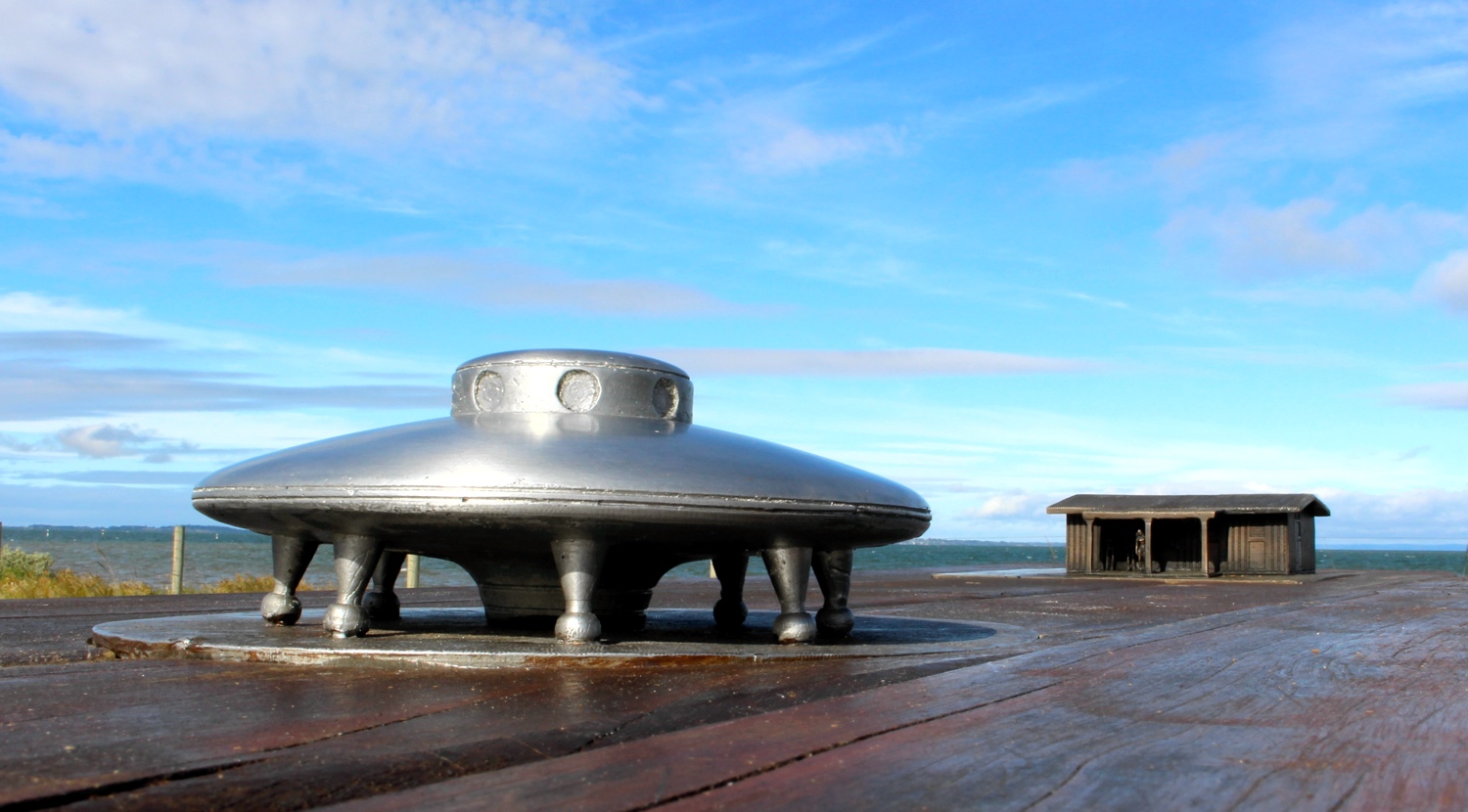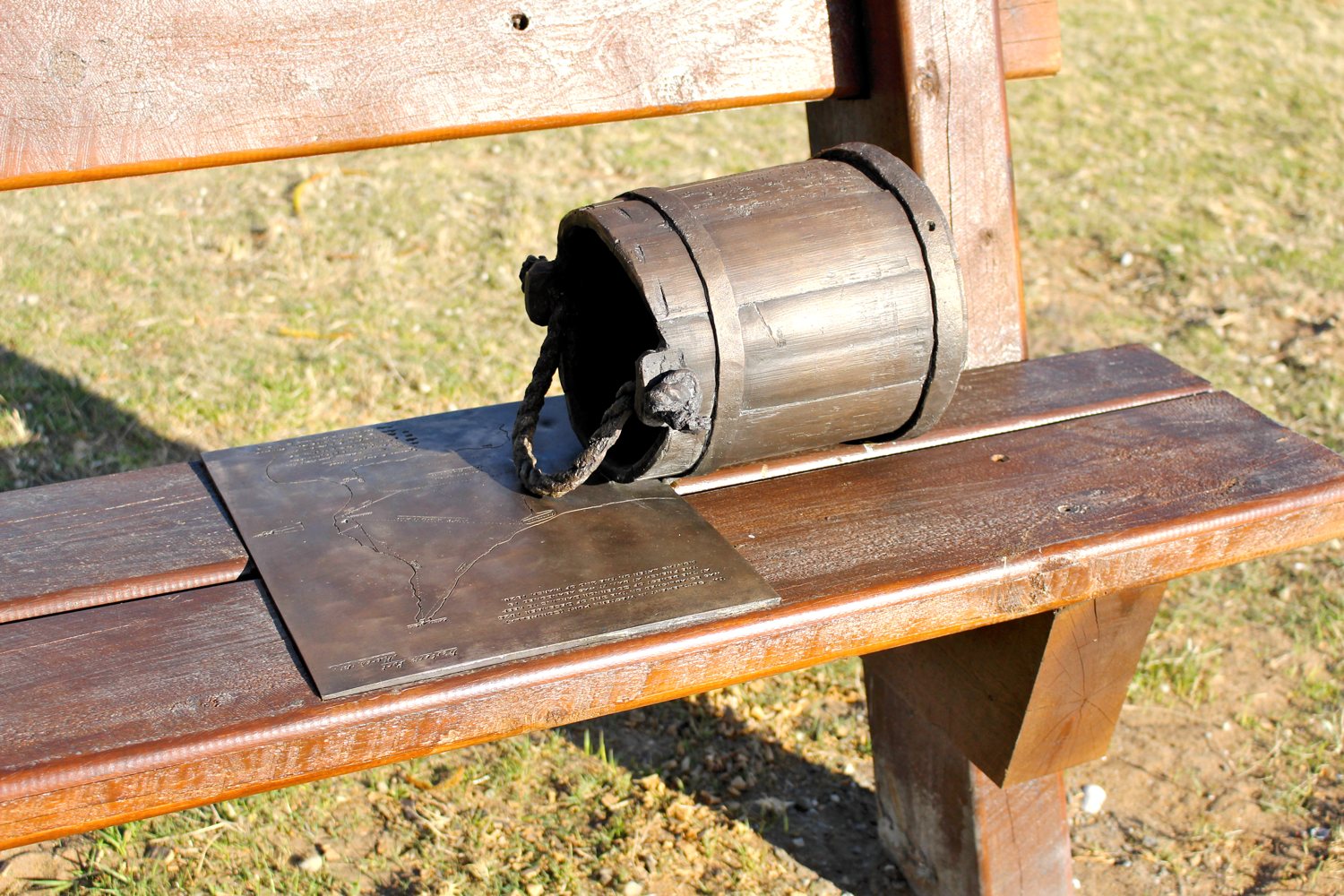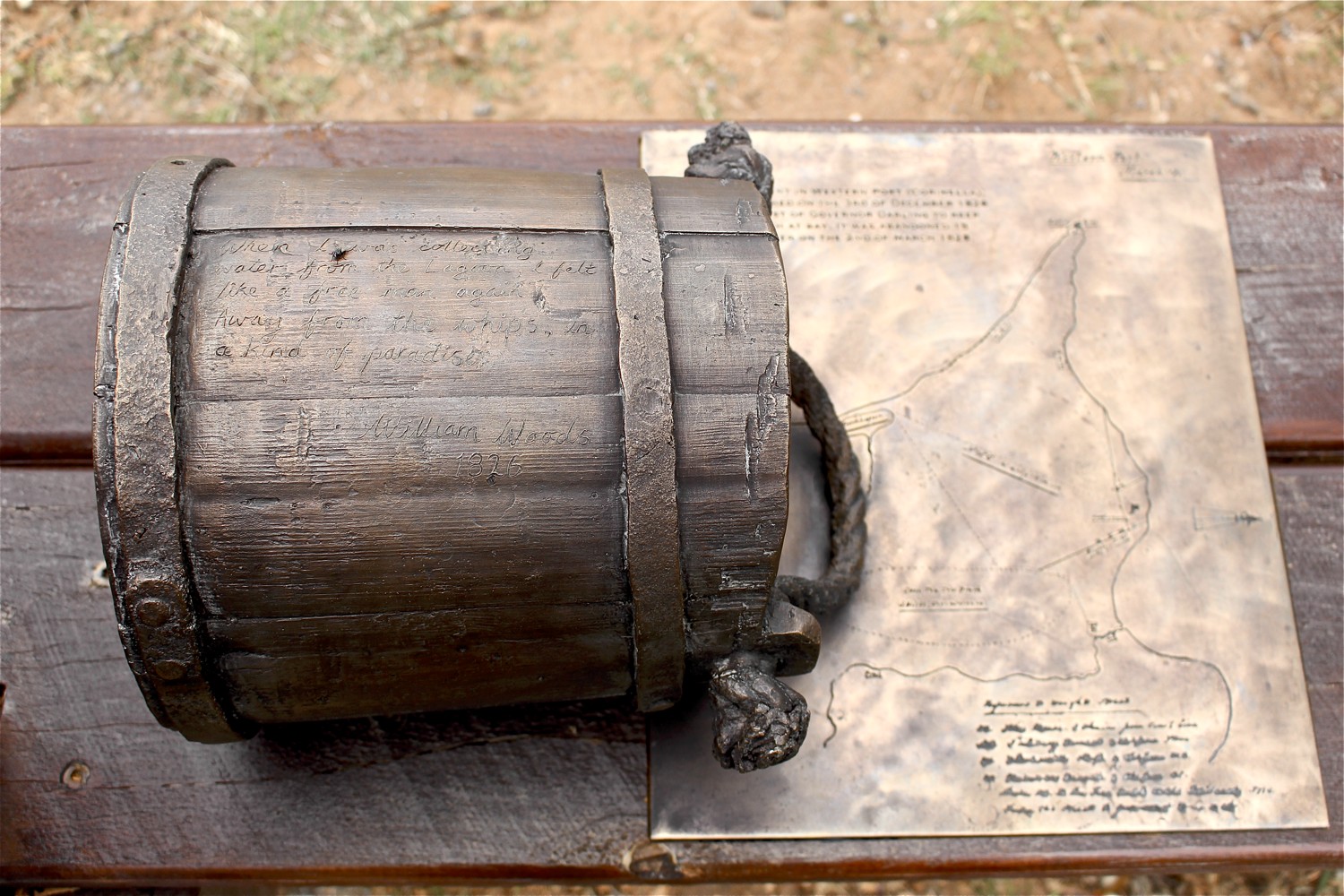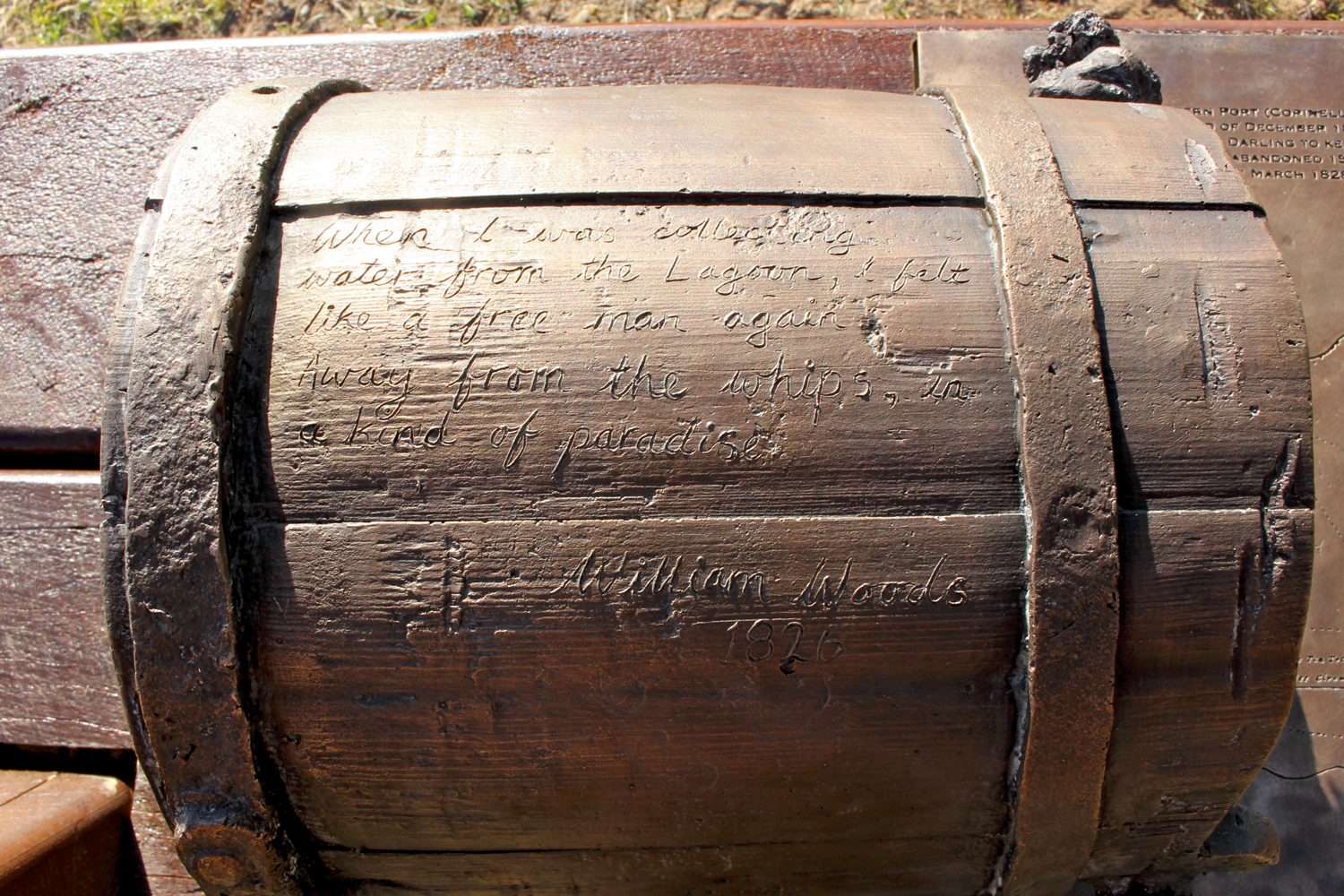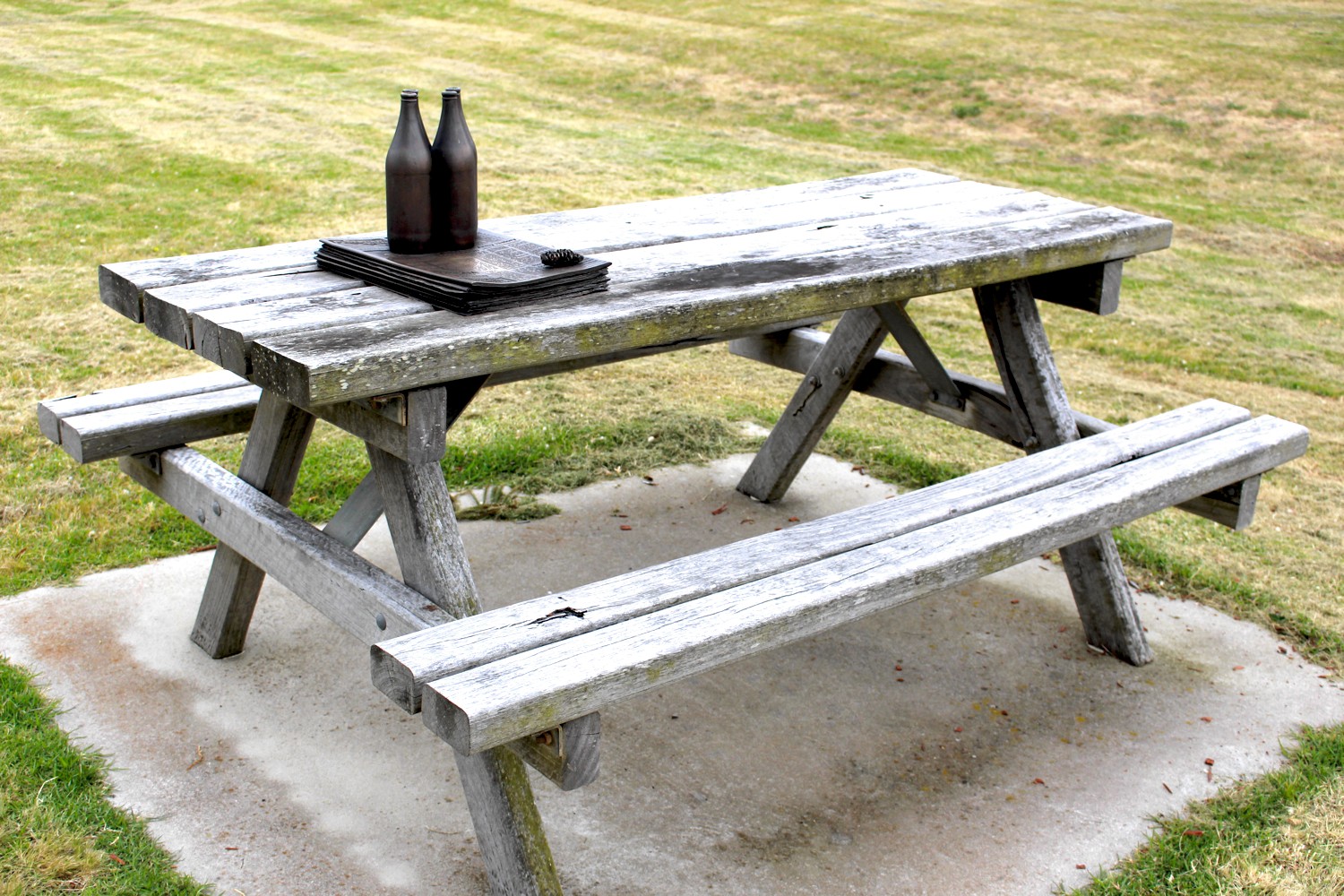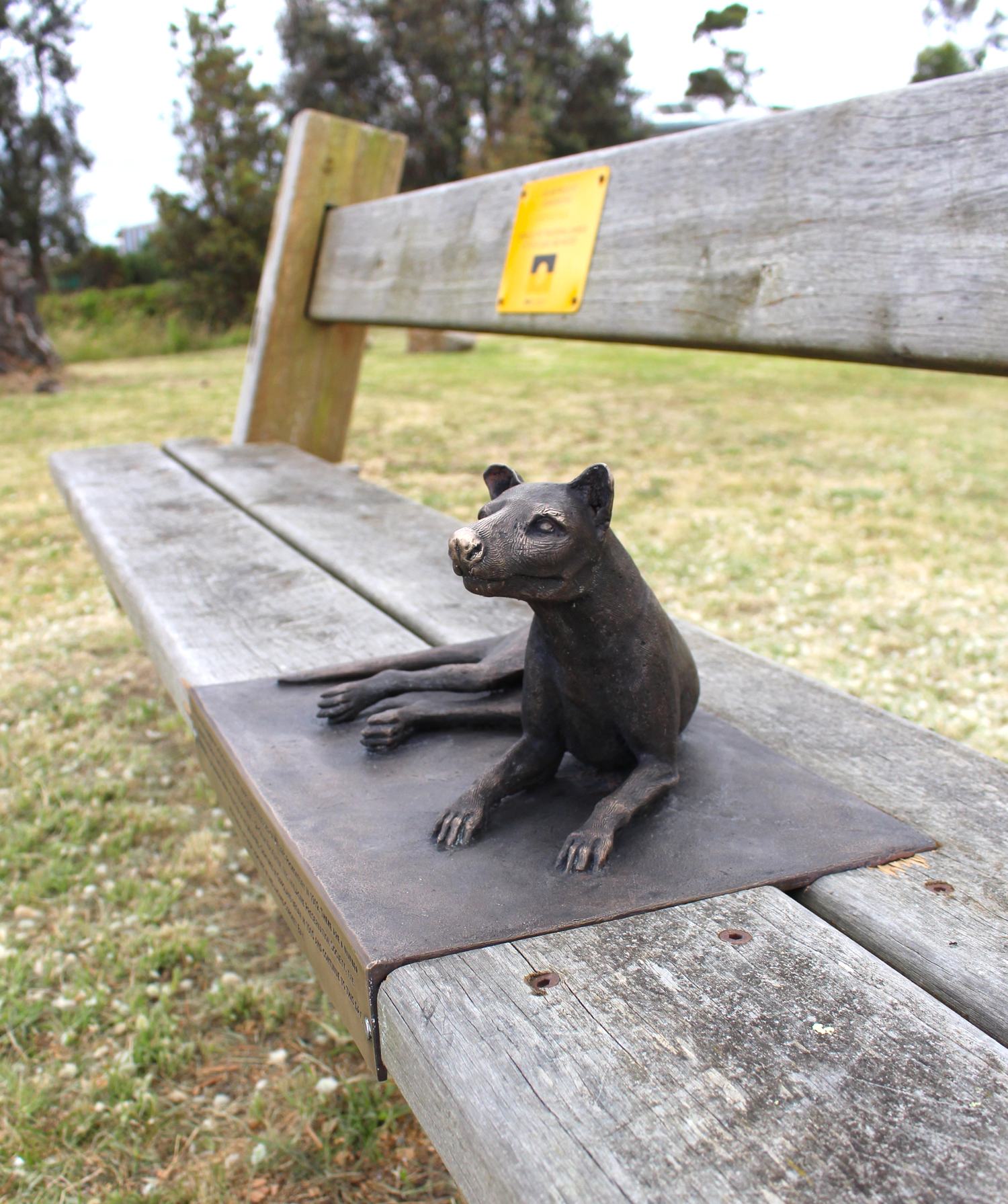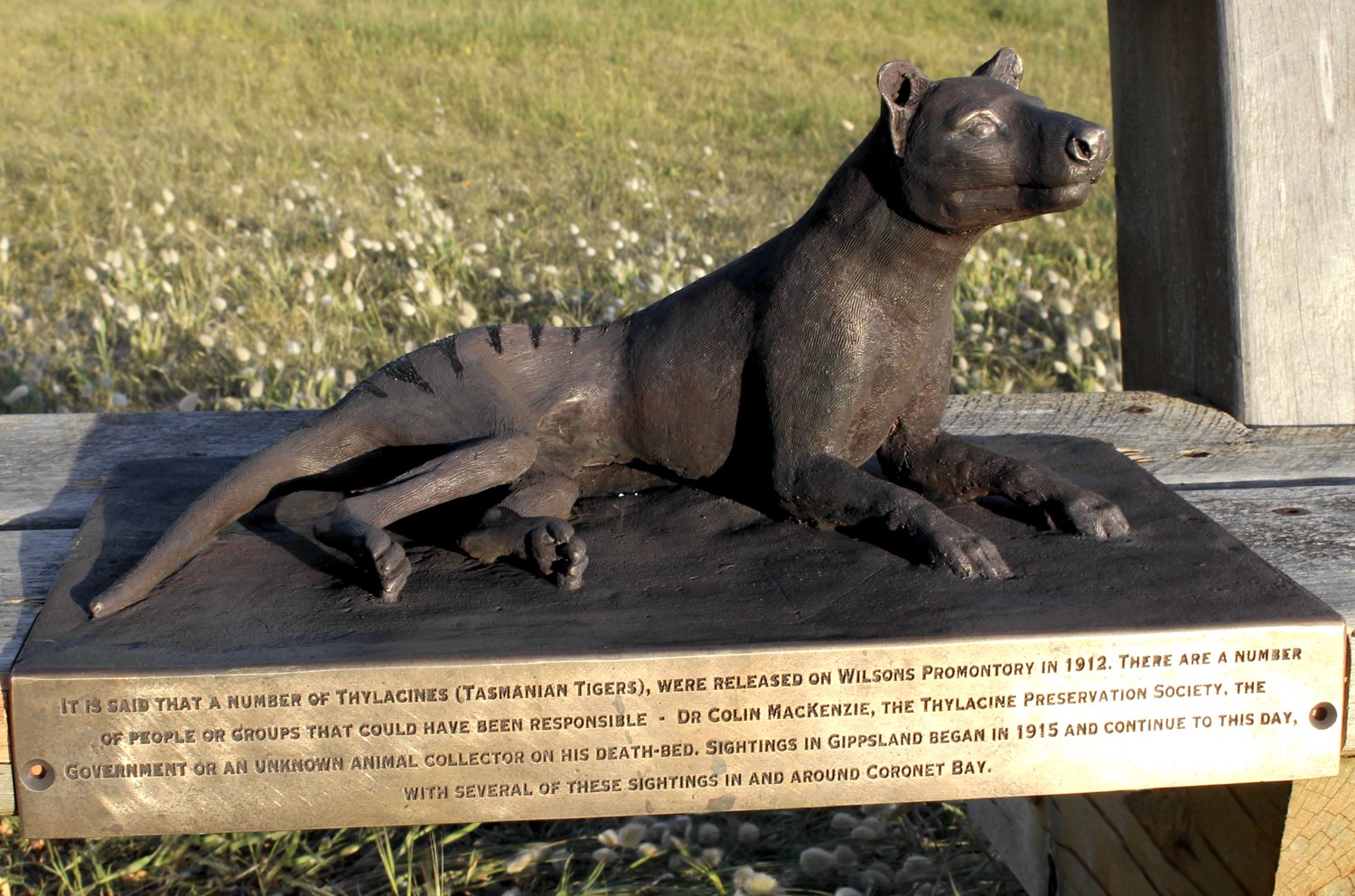Bronze Yarns
2014 - Bronze, granite, existing park furniture – dimensions vary
This work was commissioned by the Bass Coast Shire, and born from the brief - the community in Coronet Bay wanted to be directly involved with this commission, though how was not specified. What came out of that is a public artwork that uses local folklore, history, anecdotes, imaginings and legends to create site (and community) specific sculptures. These stories were told in a combination of text, historical documents, collected objects and modeled forms as bronze sculptures; a parallel series of personal “stories” were made by local school children to inhabit a large stone circle that was created for the project. All of these artworks are rooted in the place and give visitors and locals alike a deeper appreciation of, and connection to, Coronet Bay.
Bronze Yarn #1 – The Elephant Shark
Callorinchus Milii is the scientific name for what most people in Coronet Bay call the Elephant Shark. It is named for its plough like snout, which it uses like a metal detector to locate shells and molluscs.
Whilst not much is known about the habits of these strange creatures, recent genetic sequencing of them has revealed that they are one of the oldest unchanged species of vertebrates (virtually unchanged for 450 million years), earning them yet another moniker – “living fossil”. Incredibly graceful in motion, they use their large pectoral fins to “fly” with, rather than their tails to swim with.
These fish are only found off the coast of South East Australia and New Zealand and spend most of their lives in the darkness at depths of up to 500m. However, in the summer months they come up into the light to lay their distinctive eggs in shallow bays - Western Port being one of their strongholds.
This “yarn” was suggested by local identity Tim “Dr. Mangrove” Ealey, whose insistence that it be included meant that installation was postponed for six months due to lack of available specimens.
Bronze Yarn #2 – The Coronet Bay Mothership
In the Spring of 1969, a Coronet Bay couple and their daughter were on the back porch of their newly built holiday home. It was a still evening around 6.30pm, and all three were startled to see a strange aircraft approaching from the east.
It came down towards them, completely silent with lights flashing and windows visible around the top level. Figures could be seen in the windows looking towards them. The whole craft was silver looking with a slight glow to it and the lower section of it was spinning around slowly.
It came in to land on the vacant land to the east of their house about 200m away from where they were standing. “Quick, get my camera”, said the daughter, so her father ran into the house to get the box brownie, turning on the back porch light as he went. As soon as the light went on, the craft took off at high speed and disappeared towards the west at an unbelievable speed.
Bronze Yarn #3 1826 - The Bath House
Corinella was the site of the first Government House in Victoria. It was established on the 12 December, 1826 and they were ordered to abandon it 15 months later on the 2 March, 1828. The settlement was on the top of the hill (now Jamieson st); good for keeping a lookout for French “invaders”, but not so for permanent fresh water supplies. For this they had to send bullock drays down to the “Fresh Lagoon”, (now known as Coronet Bay's “holding basin” ), to collect the settlement's fresh water. It is 800m to the north of here and still a beautiful place. William Woods was a convict listed as “labourer” in the settlements records, and most likely given the lowly task of collecting the water. He would have allot of time there, in his own idyllic bath house, away from the oppressive regime that had sent him to Australia with a sentence of 7 years for stealing a donkey.
Bronze Yarn #4 So much for so little
During the 70's and 80's, a local resident and the unofficial “Mayor of Coronet Bay”, Fred Gration, started raising money to fund a community hall in Coronet Bay. Of a Sunday night, he would load his ute up with his grandchildren and drive around town picking up the bottles and papers. He would stockpile them at his farm at Bass, and then sell them to the “bottle-o”, with the funds going into the hall coffers. In the summer holidays, he and a gang of helpers would set up a “trash and treasure”, in front of the old general store. They managed to raise $20,000 towards the cause this way, which Council matched and the hall was built. Fred almost lived to see his 100th birthday, and was also well known for single-handedly winning a battle against the developer and his lawyers to stop the clearing of the Banksia Forest to the north of the town.
Bronze Yarns #5 Gippsland's Thylacines
Legend has it that a number of these animals were released on Wilsons Promontory in 1912 by a person or persons unknown, at around the time when it was heading for extinction in Tasmania. From 1915 on, there have been hundreds of reports from in and around Gippsland by people who have seen these animals. On the 16 April, 2013 a woman watched an animal feeding on road kill on Toorak Road in Inverloch. “The front half looked a bit like a dog, but the back half sort of resembled a kangaroo.....”
One of the “hot spots” for these sightings has been around Grantville, but there are several from around Corinella and the outskirts of Coronet Bay. The artist has spoken to a number of witnesses from the Corinella area in the course of researching this project who have seen these animals in the paddocks just to the North of Coronet Bay, as well as on Agars Road.
Bronze Yarns #6 Children's Yarns
David conducted workshops at the Bass Valley School with 10 students from grades 4 through to 6. He asked them to make something that represents a story or experience they have had in or around the foreshore at Coronet Bay. The children modelled directly with wax, which were then cast in bronze and mounted to a circle of large granite boulders that were brought in to act as bases and as a new focal point for the north end of the reserve.
